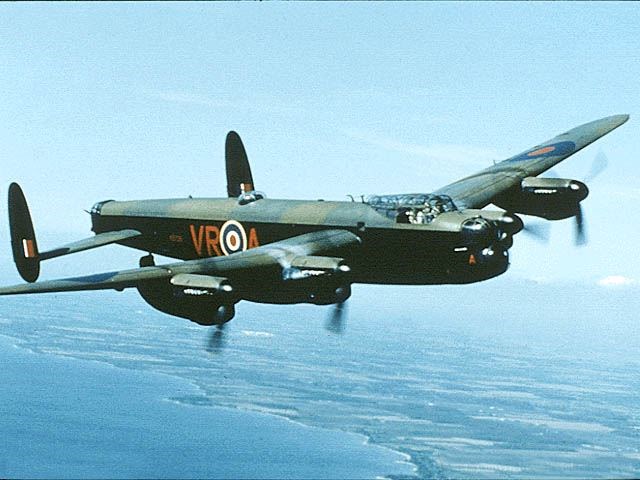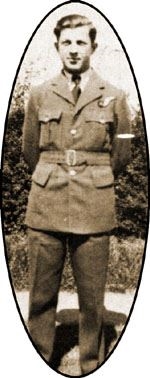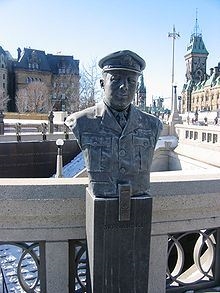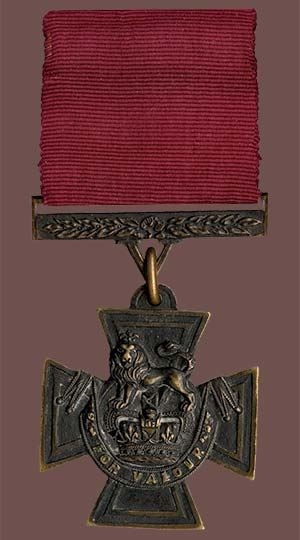 |
| The Mynarski Memorial Lancaster (National defense, Royal Canadian Air Force website) |
My definition of a hero is someone who puts others before themselves, and puts their time energy, resources, and sometimes even life, towards helping others without thoughts for glory. Unfortunately, very few heroes fit all of those qualities. Thankfully, I have found one who fits all of these qualities, and who gave his life to try and save another man in danger.
Andrew Charles Mynarski was born on October 14th, 1916 in Winnipeg, Manitoba to two recent Polish immigrants. He had 5 siblings, and was educated at King Edward and Isaac Newton elementary schools, and later at St. John’s Technical School. After his father’s death, he worked as a leather cutter to provide for his family. In 1940, during the early years of World War II, Andrew joined the Royal Winnipeg Rifles, a Militia unit, but served only for a short time before enlisting in the RCAF. In 1941, he was posted to No. 3 Manning Depot in Edmonton for basic training, and from there, he went to No. 2 Wireless School in Calgary, but was re-posted to No. 3 Bomb and Gunnery School because at MacDonald, Manitoba, he had trouble learning Morse code. He graduated as an air gunner just before Christmas, and was given his ”AG“ brevet. He was temporarily promoted to sergeant in Halifax, before going overseas. After numerous transfers through training units, he was finally posted to Flying Officer Art de Brayne’s crew as a mid-upper gunner. It was with this crew that he would fly his last mission, and give his life trying to save another crew member.
 |
| Andrew Mynarski, VC (Spitfire Emporium website) |
During the war, Andrew and his crew flew 12 missions, and were given a brand-new Avro Lancaster to replace their Handley Page Halifax. The last mission flown by Andrew Mynarski was on June 12th, 1944. The raid was on the Cambrai rail yards in France. This was the team’s 13th mission, and they arrived over the target at midnight, June 13th. The superstition behind the number 13 was not lost on Mynarski, and finding a four-leafed clover, he insisted that Pat Brophy, the rear gunner, carry it for the mission. After taking flak and being briefly “coned” by a searchlight, the crew of the Lancaster was attacked by a German Junkers JU-88 fighter. They were raked with gunfire, and both port engines were immediately engulfed in a hydraulic fire which quickly spread to the main fuselage. Losing control of the bomber, de Brayne, the pilot, ordered the crew to bail out. As Mynarski made his way to the rear hatch to jump, he saw through the fire that the rear gunner, Pat Brophy, was trapped in his turret. When the fire had started, the hydraulic systems used to move the rear turret left and right had failed, and the turret door didn’t line up with the door cut into the fuselage. To add insult to injury, while trying to escape, the rear gunner had broken the mechanical back-up system for moving the turret. Without hesitation, Andrew Mynarski made his way through the flames, and attempted to free the gunner first with a fire axe, and then with his hands. Eventually realizing that there was no way for him to escape, Brophy waved Mynarski away, telling him to jump before it was too late for him, too. As Mynarski prepared to jump, he turned around, towards Brophy, and saluted him, reputedly saying “good night, sir” as he often did to Brophy after a mission, before leaving for bed. Despite his clothes and parachute being on fire, Mynarski made it to the ground alive, but died of his burns in a German field hospital hours later. Ironically, Pat Brophy survived the fire, the landing, and the explosion as the un-dropped bomb load blew up on impact. The remaining crew members were smuggled back to England by the French, except for Brophy, who joined the resistance, and only later, when re-united with his crew, revealed the final moments in the burning bomber, and discovered that Mynarski had died after bailing out.
 |
| A bust of Andrew Mynarski in Ottowa, Ontario (Wikipedia, Andrew Mynarski article) |
The Victoria Cross is an incredibly prestigious award given to soldiers or officers who have “shown valor in the face of the enemy”. In 1945, Art de Brayne began the long process of nominating Andrew Mynarski for the Victoria Cross, the highest award that can be given to British and Commonwealth forces. While meeting some initial opposition, the nomination made its way slowly up the chain of command of the RCAF and the RAF. In October, 1946, Andrew Mynarski received the posthumous promotion to Flight Officer, and was awarded the Victoria Cross.
 |
| The Victoria Cross (warmuseum.ca) |
Andrew Mynarski showed incredible courage when he attempted to save a comrade from a burning plane with no thought for his own safety. He is a hero by all of my standards, and some even I don’t require. He really “holds up a mirror to our humanity” by asking us “what would you do in my place?” Would you have run to the back of the burning Lancaster to try and save a friend without ever thinking of yourself, or thinking “this is a lost cause, why should I die too?” By doing what he did, and sacrificing his life for his friend, he has proved that he really is a hero.
Page created on 10/19/2011 12:00:00 AM
Last edited 10/19/2011 12:00:00 AM
